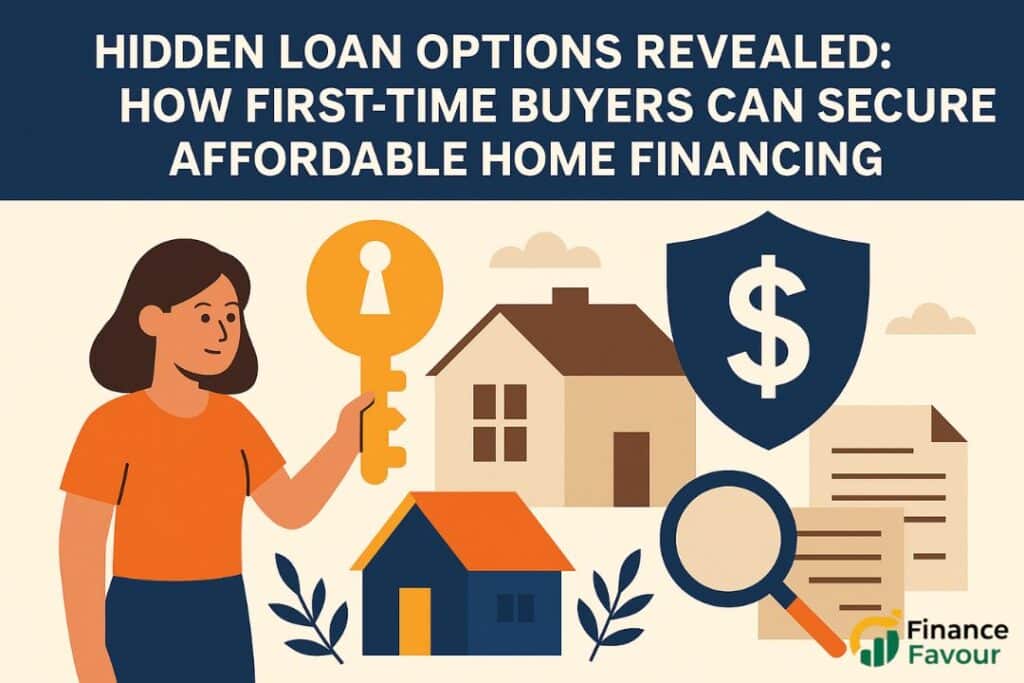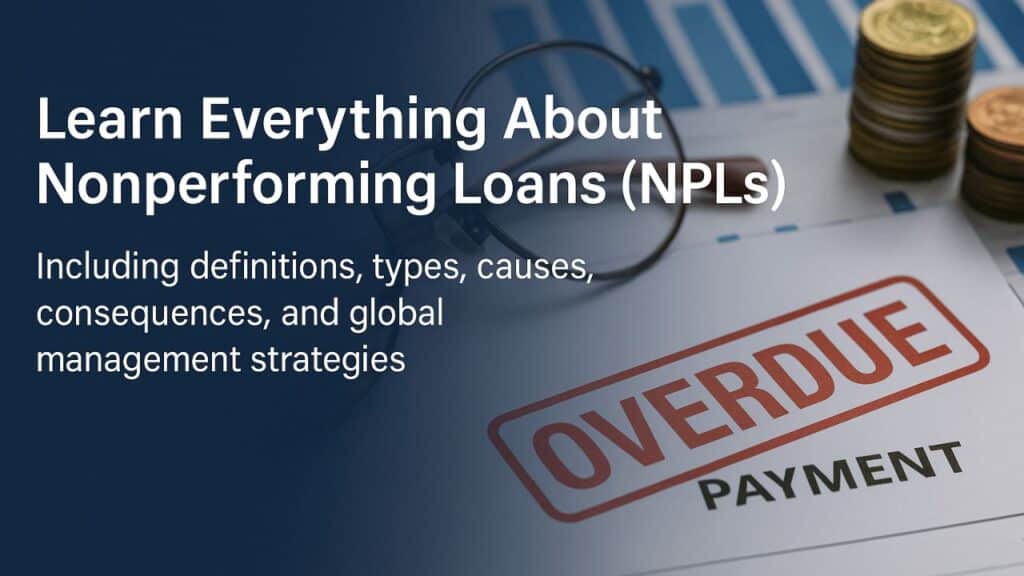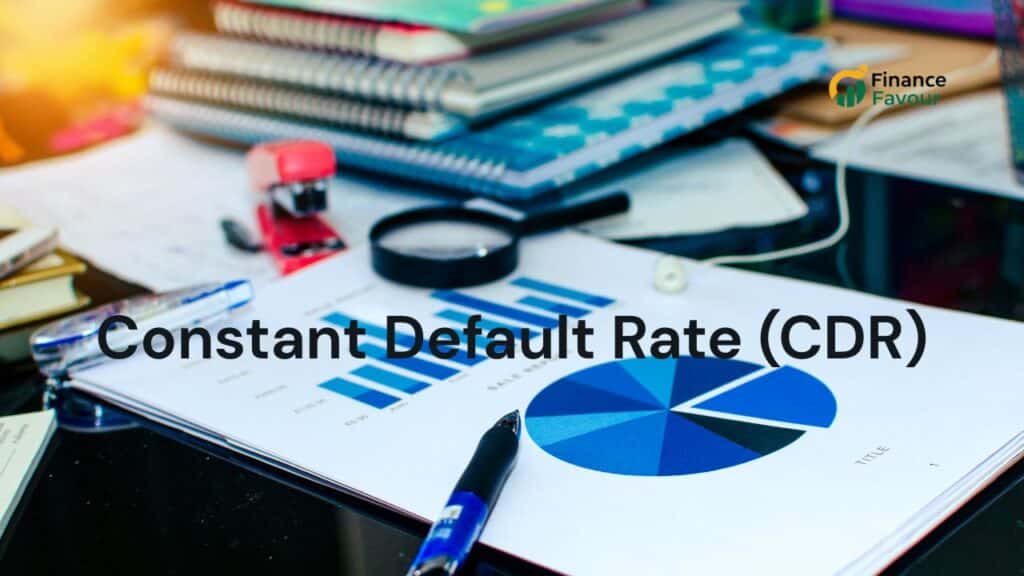Flipping houses is a lucrative investment strategy that has drawn global interest. But if you’re a non-U.S. resident with dreams of turning dilapidated properties into profitable goldmines, there’s a unique challenge: financing. Enter the world of foreign national loans for flip finances. These are specialized loan programs tailored for international investors who don’t hold U.S. citizenship or permanent residency but are eager to dive into America’s booming real estate market.
Foreign national loans are increasingly becoming a go-to solution for global investors who want to tap into the U.S. property market. They bridge the gap between opportunity and access, giving non-residents a fair shot at property flipping. But they come with their own set of rules, qualifications, and risks.
Before jumping into this world, it’s essential to understand the ins and outs of these loans—from eligibility criteria to property types and lender options. This guide walks you through everything you need to know, step-by-step, with a human touch that translates complex jargon into actionable insight.
What Are Foreign National Loans?
Definition and Purpose
Foreign national loans are mortgage or real estate investment loans specifically designed for non-resident aliens. These are individuals who live outside the U.S., do not have a green card, and often have limited or no credit history in America. Unlike traditional loans offered to U.S. citizens and residents, foreign national loans cater to people with international income sources, foreign identification, and overseas assets.
These loans serve a vital role for investors who wish to buy, renovate, and flip properties in the U.S. Without a valid social security number or domestic credit profile, traditional mortgage routes are closed. Foreign national loans open that door, enabling profitable flips even without U.S. residency.
In most cases, lenders offering these loans evaluate the borrower based on their home country’s financial records, assets, and proof of income. It’s a workaround that allows international money to participate in the vibrant and often high-return U.S. real estate flipping scene.
Key Differences from Domestic Loans
Foreign national loans differ from domestic real estate loans in several key ways:
- Documentation: You won’t need a U.S.-based W2 or tax return, but you’ll need to provide equivalent documents from your home country.
- Down Payment: Expect to pay more upfront—often 25% to 40%—since you’re considered a higher-risk borrower.
- Interest Rates: These loans typically come with higher interest rates due to perceived risk.
- Loan Term: Shorter-term options are common, especially for flips, with 6- to 24-month terms preferred.
- Approval Process: The process can take longer, as international verifications require more legwork.
Overall, while the bar is higher and the costs steeper, the returns from a successful flip often justify the investment—especially in high-demand markets like Miami, New York, and Los Angeles.
Real Estate Flipping for Foreign Investors
The Appeal of House Flipping
Flipping properties in the U.S. has always had a certain allure. It’s fast-paced, capital-intensive, and—when done right—highly profitable. For foreign investors, the appeal lies in:
- High ROI: U.S. real estate markets are known for generating impressive returns on well-executed flips.
- Market Stability: The U.S. offers more predictable regulatory and economic environments than many developing countries.
- Diverse Opportunities: From coastal cities to inland suburbs, the range of flip-worthy properties is vast.
- Strong Demand: With housing shortages and growing populations, there’s a consistent appetite for quality renovated homes.
These benefits make the U.S. flipping market irresistible for many foreign nationals. Add a weak local currency or unstable economy back home, and American bricks-and-mortar starts looking like the safest bet in the world.
Challenges Faced by Foreign Investors
That said, it’s not all sunshine and sold signs. Flipping houses as a foreign investor in the U.S. comes with its own set of hurdles:
- Financing Difficulties: Traditional banks often won’t touch foreign investors without local documentation or credit.
- Currency Exchange Risks: Exchange rate fluctuations can impact both your borrowing costs and your profit margins.
- Regulatory Roadblocks: Each state has different rules and regulations that can trip up the uninformed.
- Tax Complications: Non-residents face specific tax codes, such as FIRPTA (Foreign Investment in Real Property Tax Act), which can complicate the process.
Navigating these challenges requires research, preparation, and often professional assistance. But for those who do, the payoff can be immense.
Eligibility Criteria for Foreign National Loans
Required Documentation
To get approved for a foreign national loan, you’ll need to provide a stack of paperwork. But don’t worry, most of it is standard stuff, just localized for your country:
- Valid foreign passport
- Visa (B1/B2, H1B, etc.) or other travel documents
- Proof of income (bank statements, employer letters)
- Proof of residency (home country utility bills or ID)
- Credit reference from a bank in your home country
- A U.S. Individual Taxpayer Identification Number (ITIN), if available
Lenders want to see that you’re financially stable and capable of handling a loan, even if you’re doing it all from halfway across the globe.
Credit Score and Financial History
Since you likely won’t have a U.S. credit score, lenders may look at your international financial records instead. They’ll often ask for:
- Bank statements from the last 6–12 months
- Letters of good standing from foreign banks
- Asset statements showing cash reserves or investments
A healthy financial profile—particularly one with strong liquidity—goes a long way toward approval.
Legal Status and Residency
Contrary to what some believe, you do not need to be a U.S. resident to qualify for a foreign national loan. However, lenders usually prefer borrowers who have a legitimate visa or the ability to travel to the U.S. to manage their properties. They may also ask about your intent—are you flipping the home quickly, or planning a longer-term hold?
Residency status can affect the loan structure. For example, some lenders only work with individuals who can show at least occasional presence in the U.S.
Types of Properties You Can Flip with Foreign National Loans
Single-Family Homes
These are the bread and butter of the flipping world. Single-family homes are ideal for first-time foreign investors due to their manageable size, consistent market demand, and relative ease of renovation. Most foreign national loans are structured with these types of properties in mind, making them the most accessible option.
You can typically secure financing for a single-family property with as little as 30% down and a 6- to 12-month loan term, tailored specifically for short flips. The resale market is strong, and comps (comparables) are easier to evaluate.
Multi-Family Units
Want to scale quickly? Multi-family units (2–4 units) offer a higher income potential but come with more complexity. Not all lenders offer foreign national loans for multi-family properties, but those that do may require more documentation and higher down payments.
These properties are excellent for flipping or for buy-and-hold strategies if you’re considering future rental income. However, managing multiple units from abroad can be a logistical challenge—so local partnerships or property managers are often essential.
Condos and Townhouses
These properties can be trickier for flips due to HOA (Homeowners Association) restrictions. Many HOAs have rules limiting how quickly a property can be resold or what kind of renovations are allowed. That said, in urban centers where condos dominate, they can be a worthwhile investment.
Foreign national loans are available for condos, but lenders will scrutinize the HOA’s financials and rules. If the HOA is investor-friendly, you could find a goldmine in cities like Miami or New York.
Top Lenders Offering Foreign National Loans
Private Lenders vs. Institutional Banks
When it comes to financing a flip as a foreign investor, your choice of lender can significantly influence your experience—and your profit margins. There are two primary types of lenders: private lenders and institutional banks.
Private Lenders are often more flexible. They’re in the business of high-risk, high-reward lending and are typically more accommodating of foreign investors without U.S. credit history. They focus on the asset itself—meaning, the property you’re flipping—more than your personal background. Approval is usually faster, and terms can be customized. The catch? Interest rates and fees tend to be higher.
Institutional Banks, on the other hand, are more rigid. Think big-name banks like Wells Fargo or JPMorgan Chase. They often require a stronger financial profile and may shy away from foreign nationals without U.S. credit. However, if you can meet their standards, they usually offer better interest rates and lower fees. The process is slower, and the paperwork is heavier, but you’ll likely save money in the long run.
Ultimately, your choice depends on your goals. If speed and flexibility are more critical than cost, go private. If you’ve got the time and credentials, a bank might be your best bet.
Comparing Interest Rates and Loan Terms
Interest rates and loan terms vary wildly depending on the lender, your profile, and the property type. Here’s what to expect:
- Private Lenders: 8% to 15% interest, 6–24 month term, 25–35% down payment.
- Banks: 5% to 8% interest, 12–30 year term (if eligible), 30–40% down payment.
Most foreign national loans for flips are structured as short-term bridge loans. You borrow the money, flip the property, and repay the loan within a year or two. Some lenders may even include renovation costs in the loan amount—known as a fix-and-flip loan.
Before signing on the dotted line, always compare:
- Interest rates (fixed vs. variable)
- Prepayment penalties
- Loan-to-value (LTV) ratio
- Closing costs
- Renovation budget coverage
Shopping around can save you tens of thousands of dollars over the course of a project.
How Foreign National Loans Empower International Buyers
How to Apply for a Foreign National Loan
Step-by-Step Loan Application Process
Applying for a foreign national loan can feel overwhelming, especially when you’re thousands of miles away. But it doesn’t have to be. Here’s a simple, step-by-step approach:
- Find a Foreign-National-Friendly Lender: Not all lenders work with international clients. Start by shortlisting those who specialize in foreign national loans.
- Gather Your Documents: Prepare your passport, visa, bank statements, employment verification, and any proof of overseas assets.
- Submit Your Loan Application: This often includes details about the property you plan to flip, renovation plans, and an estimated budget.
- Underwriting: The lender will assess your financial profile, inspect the property (often via local agents), and calculate risk.
- Approval & Funding: Once approved, funds are typically released to a U.S.-based escrow account or title company.
- Start Your Flip: Use the funds to purchase and renovate the property.
- Sell & Repay: After the flip is complete, sell the property and repay the loan.
Most lenders will assign you a loan officer or consultant who can guide you through the process. Having legal or real estate help in the U.S. can also streamline the entire journey.
Common Pitfalls to Avoid During the Application
- Incomplete Documentation: Missing even one document can delay or derail the process.
- Overestimating Property Value: Inflated valuations lead to loan rejections or underfunding.
- Ignoring Local Regulations: Each state and city has different real estate laws—do your homework.
- Poor Communication: Stay in regular contact with your lender, especially if you’re overseas.
Being proactive and organized can speed up your application and increase your chances of approval.
Risks and Rewards of Flip Finances for Foreign Nationals
Potential Profits and ROI Expectations
Let’s talk numbers. The typical profit margin on a successful flip ranges between 10% and 30%, depending on location, renovation scope, and market demand. In hot markets like Miami or Dallas, foreign investors have turned $300,000 properties into $400,000 sales in under a year.
ROI (Return on Investment) for flips can be impressive. Here’s a simple breakdown:
| Investment | Renovation | Sale Price | Profit | ROI |
| $250,000 | $50,000 | $350,000 | $50,000 | 20% |
Foreign national loans help make these profits possible, turning capital sitting abroad into active, income-generating investments. The key lies in picking the right property, budgeting wisely, and timing the sale effectively.
Risk Management Strategies
Of course, flipping isn’t all gain—there’s plenty of risk. Here’s how to manage it smartly:
- Conduct Thorough Market Research: Understand local trends before buying.
- Use Conservative Estimates: Always assume the flip will cost more and take longer than expected.
- Work With Local Experts: From contractors to real estate agents, having a U.S.-based team reduces your risk.
- Keep Cash Reserves: Unexpected expenses are the norm, not the exception.
- Secure Insurance: Protect against damage, theft, or lawsuits.
By preparing for the worst, you’ll position yourself to weather setbacks and come out ahead.
Legal and Tax Considerations
FIRPTA and U.S. Tax Implications
One major hurdle for foreign investors is FIRPTA—the Foreign Investment in Real Property Tax Act. This law requires that 15% of the gross sales price be withheld at the time of sale for tax purposes. It doesn’t matter whether you made a profit or not.
There are exceptions and exemptions, but they require careful planning. You may be able to get a withholding certificate to reduce or eliminate the tax hold, especially if you plan to reinvest or if the buyer uses the property as a primary residence.
Also, foreign investors must file U.S. tax returns (Form 1040NR or 1120-F) and may need an ITIN (Individual Taxpayer Identification Number). Failure to comply can result in fines or legal issues.
Legal Structures for Ownership
To limit liability and simplify taxes, many foreign nationals choose to buy property through a U.S.-based legal entity:
- LLC (Limited Liability Company): Offers liability protection and pass-through taxation.
- Corporation (C-Corp or S-Corp): Suitable for large-scale investors but more complex.
- Trusts or Partnerships: May provide estate planning or privacy benefits.
Each structure has its pros and cons, so consulting with a U.S. attorney or CPA is a smart move.
Case Studies: Successful Foreign Investor Flips
Example 1: Brazilian Investor in Florida
Meet Carlos, a real estate enthusiast from São Paulo. With a passion for architecture and a growing interest in international investments, Carlos decided to flip his first U.S. property in Miami. He secured a foreign national loan from a private lender with a 12-month term, 10% interest rate, and a 30% down payment.
Carlos purchased a single-family home in need of cosmetic repairs for $280,000. After spending $40,000 on renovations—new kitchen, flooring, and landscaping—he listed the property for $399,000. Within 45 days, it sold. After repaying his loan and expenses, Carlos walked away with a $45,000 net profit in just six months.
His takeaways?
- Hire a trusted U.S.-based contractor.
- Get a solid appraisal before purchase.
- Stay on top of U.S. tax obligations.
Carlos is now working on his third flip in Orlando.
Example 2: British Investor in Texas
Emily, a financial analyst from London, wanted to diversify her portfolio. She opted for a condo flip in Austin, Texas, leveraging a foreign national loan through a regional credit union.
With a $350,000 purchase price and $30,000 in renovations, Emily turned around and sold the condo for $465,000. She managed the project remotely with the help of a local property management firm. Her ROI was approximately 18%, even after paying a 12% interest rate on her loan.
Her best decision? Hiring a local real estate agent who knew the market inside out and helped price the condo competitively.
Tips for First-Time Foreign Flippers
Start Small and Local
It’s tempting to dive into high-end projects right away, but for your first flip, start small. Choose a single-family home in a stable neighborhood. Avoid fixer-uppers that need structural work or major permits.
Choose locations where:
- Property values are rising steadily.
- Renovation costs are predictable.
- There’s a high demand for resale.
Cities like Tampa, Charlotte, or Dallas offer great starter markets for new foreign investors.
Build a Reliable Local Team
You’re not going to fly in every week, so you need a boots-on-the-ground team you can trust:
- Real estate agent
- General contractor
- Property inspector
- Tax advisor
- Real estate attorney
Spend time vetting these professionals. Ask for references, check credentials, and—when possible—meet them in person or via video call. Your success hinges on their reliability.
Comparing Flip Financing Options Beyond Foreign National Loans
Hard Money Loans
Hard money loans are often lumped in with foreign national loans but aren’t quite the same. They’re asset-based loans that work for both domestic and foreign investors. Approval is based on the property’s potential value, not the borrower’s background.
Pros:
- Fast funding
- Minimal documentation
- Great for flips
Cons:
- Very high interest rates (up to 18%)
- Short repayment periods
Partnerships and Joint Ventures
Can’t qualify for a loan? Consider partnering with a U.S.-based investor. They provide the credit, you provide the capital or project management. Profits are split based on your agreement.
Tip: Always put partnership terms in writing, ideally through an attorney.
Cash Deals
Some foreign investors skip loans entirely and use all-cash deals. This eliminates interest costs, speeds up closing, and gives more negotiating power. But it also ties up your capital.
If you’re flush with cash and confident in your flip, this can be the safest route.
Exit Strategies for Foreign Flippers
Selling vs. Renting
Your flip may go exactly as planned—or not. Be ready with a Plan B. If the market dips, consider renting the property instead of selling at a loss.
Selling Pros:
- Fast return on investment
- Clean exit
- No property management hassle
Renting Pros:
- Monthly income stream
- Potential property appreciation
- Tax deductions
Evaluate the local rental market before buying. If there’s strong demand, a rental fallback could save your investment.
1031 Exchange and Reinvestment
Looking to defer U.S. capital gains taxes? Consider a 1031 exchange. This lets you roll profits from one investment property into another, tax-deferred.
Note: Not all foreign investors qualify, and the IRS has strict rules. You’ll need to:
- Identify the new property within 45 days
- Close within 180 days
- Work with a qualified intermediary
It’s worth exploring if you plan to stay in the U.S. market long term.
Future Outlook of Flip Finances for Foreign Investors
Trends in the U.S. Real Estate Market
Despite global uncertainty, U.S. real estate remains strong. Key trends that impact foreign flippers include:
- Growing suburban markets: Post-pandemic, more buyers are heading to suburbs.
- Increased renovation demand: Older housing stock = more flip opportunities.
- Rising construction costs: Budget wisely; renovation expenses are climbing.
- Stricter lending policies: Stay informed, especially on foreign national loan criteria.
Advice for Long-Term Success
If you’re serious about real estate flipping in the U.S., think beyond one project. Build a pipeline. Network with other investors. Keep learning about local laws and market conditions.
Consider these keys to long-term success:
- Reinvest profits strategically.
- Keep detailed records for tax and legal purposes.
- Stay updated on immigration and financial regulations.
- Diversify across states and property types.
Real estate flipping can become not just a side gig but a powerful wealth-building engine—even from overseas.
Conclusion
Foreign national loans open the door for international investors to participate in one of the world’s most dynamic real estate markets. From single-family flips in Florida to multi-unit renovations in California, the opportunities are vast—and so are the rewards.
But it’s not a game for the unprepared. Success in flipping as a foreign national requires financial planning, a strong local team, and a deep understanding of both the market and legal frameworks. With the right strategy, you can turn your international capital into consistent, high-yield returns in the U.S.
So, whether you’re an investor in Dubai, London, or Mexico City, remember: the American Dream isn’t just for citizens—it’s for anyone willing to put in the work.
FAQs
Yes, non-residents can invest in and flip U.S. properties using foreign national loans, provided they meet lender requirements and comply with tax regulations.
Most lenders require 25% to 40% down, depending on the property type, location, and the borrower’s financial profile.
Foreign national loans cater specifically to international investors, while hard money loans are asset-based and used by both domestic and foreign flippers. Hard money loans often have higher interest rates.
Yes, under FIRPTA, 15% of the gross sales price is withheld for tax purposes unless exemptions apply. Always consult a U.S. tax professional.
Technically, yes—but each state has its own laws and real estate market dynamics. Some may be more investor-friendly than others.




